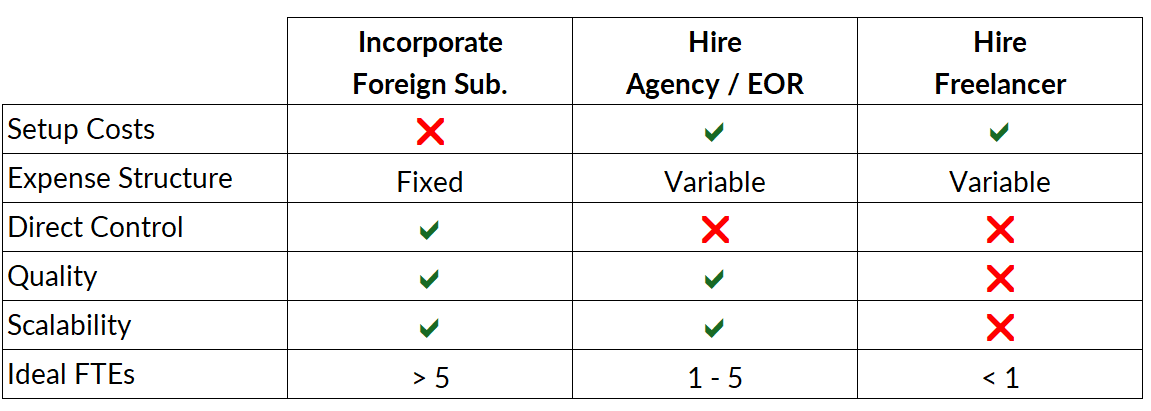Key Performance Indicators (KPIs) are crucial tools for any business, offering fast insights into performance and guiding business management. But choosing the right KPIs from the ocean of available metrics may feel overwhelming or confusing. How do you find THE RIGHT KPI and avoid biased or misleading metrics?
This is our step-by-step approach on how to select KPIs for small businesses, with a focus on how they reflect your unique business strategies.
Why Are KPIs Important to a Business?
Key performance indicators are easy-to-digest signals as to whether the company is on track to achieve its goals. They help businesses track progress, make informed decisions, and align their team’s efforts with strategic goals. KPIs influence employee behavior, highlight areas of success, and identify potential issues that need attention.
Considerations When Choosing KPIs
The power of KPIs comes from their focus. By selecting 5-8 KPIs, your force the business to concentrate activity around those key accomplishments. Yet there are hundreds of KPIs to choose from! To choose the best KPIs for a small business, consider the following elements.
KPIs Must Align with Business Strategies
KPIs MUST align with and directly support your business strategies. For example, an early-stage tech startup may emphasize User Growth Rate, whereas a growth-stage startup should prioritize Customer Lifetime Value (LTV.)
Consider industry benchmarks or standards to ensure alignment. Gourmet restaurants focus on Avg. Spend per Customer, whereas fast-food chains cares more about Customer Throughput.
KPIs Must be Measurability
Choose KPIs that can be accurately, consistently, and easily measured. The metric should be simple and easily understood by everyone. Avoid the temptation to make “the perfect” metric through complex formulas. These risk misunderstanding and a feeling of “I don’t trust the numbers.” Although simple KPIs lack the sophistication, they encourage buy-in through comprehension.
KPIs Must be Actionability
KPIs should measure outcomes or activities directly within your team’s control. Foreign exchange rate, while important to an international business, is outside its control and largely unactionable. By contrast, revenue per employee is directly influenced by sales and staffing decisions.
How to Develop KPIs for a Business
Selecting KPIs is a collaborative process that should be regularly repeated as the business changes. Here’s a 6 step process for how to select KPIs suitable for your small business:
- Create a Comprehensive Business Plan. Business planning is an entire process itself, but is a prerequisite to establishing KPIs. Business plans should cover a 2-5 year horizon, with a detailed go-to-market strategy, operations, talent, and capital plan.
- Select One Metrics per Division. Select one key metric for each area of your business plan – typically sales, marketing, operations, talent management, and capital management. Remember your KPIs should align with business strategies, measurable, and actionable.
- Add Additional KPIs to Critical Areas. Choose 1-2 more KPIs for areas of strategic importance in your business plan, keeping total KPIs between 5-8.
- Consult with Your Team. Meet with your managers to assess the strengths and weaknesses of potential KPIs, understanding their inherent biases. Change or adapt KPIs to ensure there is buy-in, otherwise they will be ineffective.
- Build a Simple KPI Dashboard: Use color coding for easy tracking and review these KPIs weekly with your management team.
- Review KPI Effectiveness Quarterly: Continuously assess and adjust your KPIs to ensure they align with your evolving business goals.
The Dangers of KPIs
Although the benefits of KPIs in business are proven, there is also danger in their one-dimensional perspective. The simplicity of KPIs is both easy to understand and lacking nuance, so never rely solely on the numbers. When KPIs indicate a problem, discuss with your team and analyze the situation. Is this a false-alarm or canary in the coal mine? Only deeper analysis and collaboration can answer that question.
KPIs can change employee behavior due to the Hawthorne Effect, so you may see major changes once a metric is chosen. Like they say in the tale of the monkey paw: “Be careful what you wish for, you just might get it!”
Exercise sound judgement before punishing employees for missing their metrics. Remember that KPIs only measure one element of performance. Managing your team based solely on the numbers can lead to data manipulation, obscuring the true health of your business. KPIs should be indicators for deeper investigation, not the sole basis of management decisions.
Selecting KPIs in summary
Choosing the right KPIs is about more than just tracking numbers; it’s about aligning them with your business’s strategic objectives. By how to select KPIs and understanding their potential impact on behavior and decision-making, you can use them to guide your business towards sustained success.
Looking for professional assistance? Contact CFOShare for help selecting the right KPIs for your business.
This article was written by a CFOshare employee with assistance from generative AI for rhetoric, grammar, and editing. The ideas presented are a combination of the author’s expertise, original ideas, and industry best practices.




